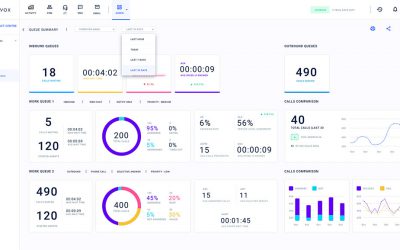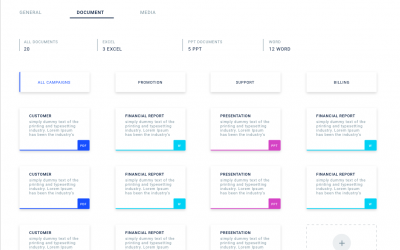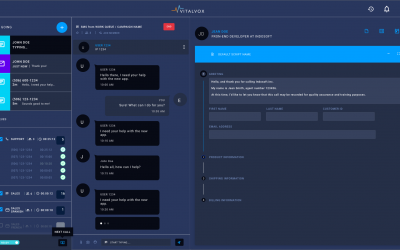The tech industry has become a critical driver in the quest for environmental sustainability. Sustainable software development, once a niche concern, is now central to the agendas of tech companies worldwide. This shift comes as environmental awareness grows and consumers increasingly expect green initiatives from the businesses they support. In this article, we’ll explore key Eco-Friendly Development Trends, from energy-efficient coding practices to carbon-conscious cloud solutions.
Why Sustainable Software Development Matters
As software becomes an integral part of our daily lives, the resources used to develop and run this software also increase. According to research, data centers worldwide contribute nearly as much to global carbon emissions as the airline industry. Fortunately, sustainable software aims to mitigate these effects by reducing energy consumption, minimizing waste, and adopting greener practices.
Energy-Efficient Coding Practices
One of the core aspects of sustainable software is energy-efficient coding. Developers now prioritize code optimization not just for performance but also for energy savings. Efficient code reduces the time and power needed for software to run, which directly translates into lower energy consumption. For instance:
- Minimalism in Coding: Writing clean, concise code without excessive processes is essential for reducing energy usage.
- Efficient Algorithms: Optimizing algorithms to perform fewer operations reduces computing load, leading to less energy consumption.
- Memory Management: Effective memory usage means fewer demands on processing power, which helps conserve energy.
These techniques ensure that the software is optimized for both high performance and low energy usage.
Cloud Computing and Green Data Centers
As more businesses move to the cloud, cloud providers are increasingly adopting eco-friendly practices to reduce their environmental impact. Green data centers and carbon-neutral cloud solutions are becoming the norm for companies that aim to minimize their ecological footprint.
- Renewable Energy Sources: Many data centers now use solar, wind, and other renewable energy sources to power their operations. Tech giants like Google and Amazon have made significant strides in running their data centers on renewable energy.
- Virtualization and Consolidation: Virtual machines and container technology help maximize the use of physical resources, enabling businesses to do more with fewer servers.
- Server Efficiency: Using energy-efficient hardware and adopting low-power processors reduce overall energy demands while maintaining performance.
These green cloud strategies benefit both the environment and businesses by lowering operational costs and appealing to eco-conscious consumers.
Low-Power Computing Devices
Low-power computing devices have also seen a surge in popularity. Companies are now focusing on developing software that can run smoothly on low-power hardware, such as mobile devices and IoT gadgets. These devices require less energy and are often used in applications ranging from remote sensors to consumer electronics, making them crucial in reducing overall carbon output.
By designing software that operates effectively on low-power devices, developers reduce both energy consumption and e-waste. Additionally, this aligns well with global efforts to expand digital accessibility, as many low-power devices are also more affordable.
Sustainable Design Principles: Less Is More
User experience (UX) and user interface (UI) design play a surprisingly significant role in sustainable software development. Eco-friendly software design avoids unnecessary visuals, animations, or features that consume excess resources, emphasizing simplicity and utility.
- Dark Mode and Minimalist UI: Dark mode consumes less energy on OLED screens, a simple yet effective strategy to reduce energy consumption.
- Simple Navigation: Intuitive, streamlined design reduces the time users spend navigating software, indirectly reducing the energy needed for operation.
- Adaptability Across Devices: Sustainable software is responsive and adaptable, so users don’t need high-powered devices to experience an optimal version of the software.
These sustainable design principles also tend to improve user satisfaction, as they create smoother, less resource-intensive user experiences.
AI and Machine Learning in Sustainability
Artificial intelligence (AI) and machine learning (ML) contribute to sustainability in various ways. These technologies can optimize data center cooling systems, reduce energy consumption in real-time operations, and enhance energy-efficient cloud management. However, AI and ML processes themselves are data-intensive and can be energy-hungry, posing a challenge for sustainability.
To balance their use, companies now focus on energy-efficient AI practices, such as:
- Model Compression: Reducing the size and complexity of AI models lowers the computational power needed to run them.
- Federated Learning: By processing data locally rather than on central servers, federated learning reduces energy usage associated with large-scale data transmission.
- Greener AI Frameworks: Software frameworks designed with energy efficiency in mind, like TensorFlow Lite, are increasingly popular among developers.
AI-driven efficiency improvements not only enhance sustainability efforts but also lead to significant cost savings, making them a valuable investment.
Recycling and Sustainable Lifecycle Management
Another eco-friendly trend in tech is sustainable lifecycle management, which involves considering a product’s environmental impact from development to disposal. Software companies are increasingly adopting recycling and e-waste reduction practices for both hardware and software:
- Sustainable End-of-Life Plans: Planning for hardware and software disposal reduces e-waste and promotes recycling.
- E-waste Recycling Programs: By partnering with recycling organizations, tech companies can ensure that obsolete or discarded hardware is responsibly processed.
- Lifecycle Tracking Software: Tracking and managing the lifecycle of tech products help companies plan upgrades and prevent premature replacements.
This approach ensures that tech products are not just environmentally friendly at the development stage but throughout their entire lifecycle.
Embracing eco-friendly development trends
Adopting sustainable software practices benefits businesses, consumers, and the environment. Organizations can start by evaluating current processes, identifying areas for improvement, and implementing energy-saving practices. By following these steps, companies contribute to a greener future and establish themselves as eco-conscious leaders in their industries.
Contact Us for Sustainable Software Solutions
Are you interested in integrating eco-friendly development trends into your organization? Our team is here to help you implement sustainable software solutions, from efficient coding practices to lifecycle management. Contact us today to start your journey toward green, responsible innovation.



